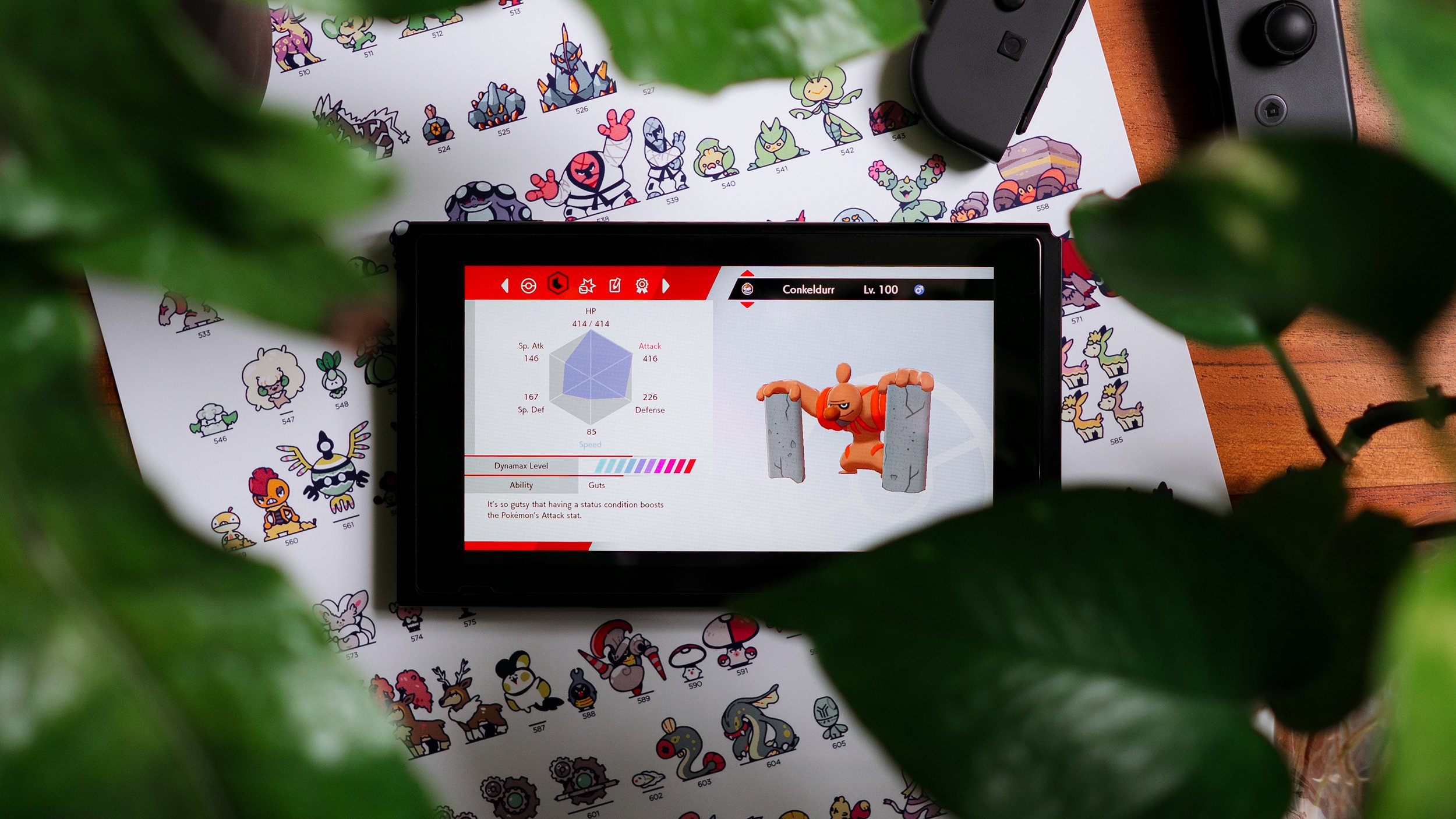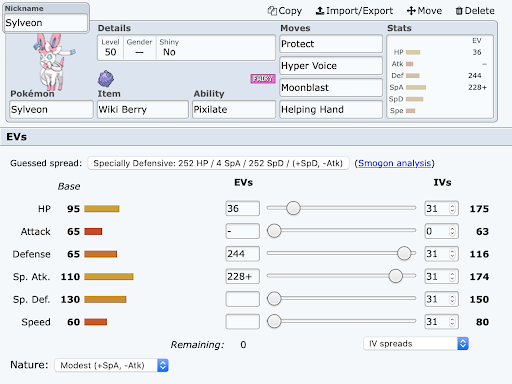
EVing #2: The Next Step
4min 55sec read
Why would you want to make more complex EV spreads?
Written by Aaron Traylor
Teambuilding / Putting It All Together
Taking the next step with your EVs-- why go beyond a simple spread?
EVs are a complex part of Pokémon, and we just outlined a straightforward strategy for applying them to your team. However, a trainer has complete control over their team, and EVs can be as complicated as you need (or want!). We’re going to outline some key reasons why a trainer would want to do something more specialized with their EV spreads, or why they might not.
“Simple” EVs versus “Complex” EVs
A simple EV spread, as discussed in our earlier article, focuses on the Pokémon’s strengths, and might be intended to be general-purpose. These EV spreads often focus on maxing a few important stats.
A complex EV spread has a specific purpose and focuses on carrying out that goal precisely and optimally. It may be related to a particular enemy Pokémon that your Pokémon might be facing against, or a particular situation that you might find your Pokémon in. These EV spreads often invest in many or all of a Pokémon’s stats.
Let’s take our Sylveon example from the previous article. Previously, we showed that Excadrill would knock out our Sylveon 81.3% of the time.
252 Atk Excadrill Iron Head vs. 252 HP / 4 Def Sylveon: 198-234 (98 - 115.8%) -- 81.3% chance to OHKO
We’d like for our Sylveon to survive this attack. Here is a complex EV spread that does just that:
Sylveon @ Wiki Berry
EVs: 36 HP / 244 Def / 228 SpA
Modest Nature
- Protect
- Hyper Voice
- Moonblast
- Helping Hand
252 Atk Excadrill Iron Head vs. 36 HP / 244 Def Sylveon: 146-174 (83.4 - 99.4%) -- guaranteed 2HKO
This Sylveon achieves a specific goal-- it survives Jolly Excadrill’s Iron Head with the least total EVs possible, and then puts the rest in Special Attack.
When do I want a complex EV spread?
As with all things in Pokémon, this usually comes down to the context in which you’re asking your question. Here are some potential reasons to use an EV spread that is more specialized than general:
You want your Pokémon to reach a certain Speed point that outspeeds another Pokémon or combos with your team well.
You want your Pokémon to knock a specific Pokémon out with a specific attack and be bulky otherwise.
You want your Pokémon to survive a specific attack from a specific Pokémon and be offensive otherwise.
Pitfalls of complex EV spreads
However, it’s important to note that some things can go wrong when you add a complex EV spread that might make it not much better than a simple EV spread. What are some things that might go wrong?
Your Pokémon might never be in the situation that you EV for. For example, in our Sylveon versus Excadrill example, the Excadrill had a neutral nature and didn’t have a held item. If you go to a tournament with that Sylveon and never face an Excadrill, or face an Excadrill with an Attack-boosting nature or holding a Life Orb, your Pokémon might get knocked out when you don’t expect it. An engineered EV spread is best when it is relevant.
EV spreads and damage calculations are best when you can remember them in battle. You don’t want to be surprised by being knocked out (or sometimes by surviving an attack!)
If you survive an attack with a sliver of health, know that many factors (Sand, Fake Out, switching in, weak spread moves) mess those damage calcs up quickly. Being able to flexibly switch your Pokémon in to cover for each others’ weaknesses is usually more useful than surviving one specific attack from full health.
Your Pokémon may no longer be able to do what you originally intended for it to do when you added it to the team. Taking significant points from a Pokémon’s Attack and Speed stats may change how it functions entirely, and you may need to switch up how you battle with that Pokémon. If you don’t find it effective, go back to the board on your EV spread.
Taking EVs out of a Pokémon’s speed stat to allow it to reach defensive benchmarks may give you an inherent disadvantage against other Pokémon of the same species. For example, if two Terrakion threaten to knock each other out with Close Combat, the one that moves first wins– a Terrakion that takes EVs from Speed will never have the chance to win that fight unless they’ve decided to become extremely bulky.
When in Doubt, Start Simple
“When I’m starting a new team, I almost always start with simple EV spreads. The main reason for this is that I don’t want to spend time making a complex EV spread for an idea that I might move on from after one battle. I find it helpful to start with a basic spread and gradually make my spreads more complex as I test my team, aiming to tailor the Pokémon on my team for the scenarios I run into while I am testing.”
Conclusion
A spread being complex doesn’t mean that it’s necessarily better than a simple EV spread-- at the end of the day, what matters is knowing what your Pokémon is capable of in battle. Many players start off their teams with extremely simple EV spreads, and some keep them that way-- if it isn’t broken, don’t fix it! Most players only make complex EV spreads for their Pokémon once they’ve done some practice battles or theorymonning and are aware of the battle scenarios that their Pokémon are going to be in. In the next article, we’re going to talk about just that-- how to make your own complex EV spreads based on your practice and your Pokémon’s intent.


